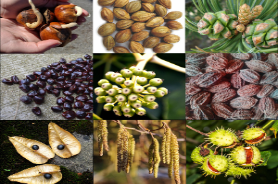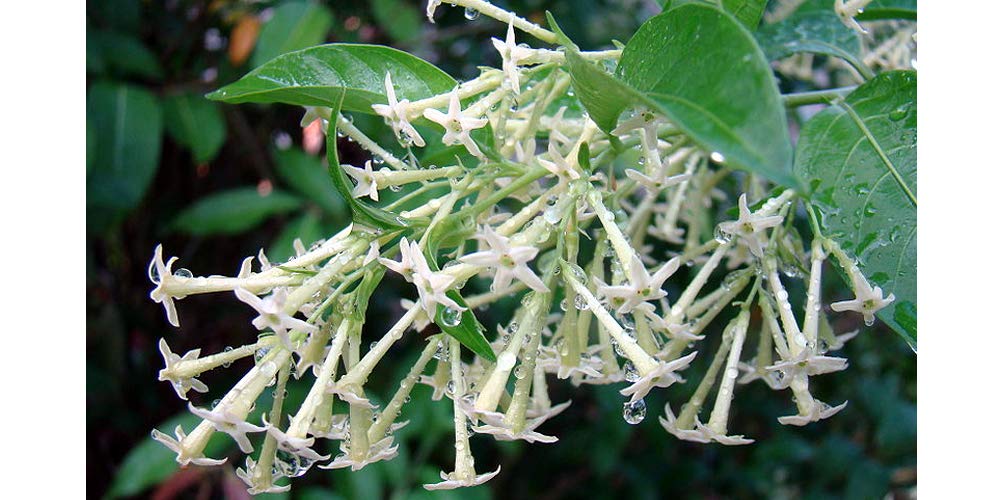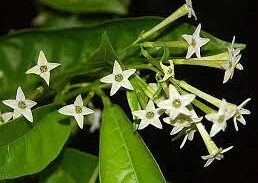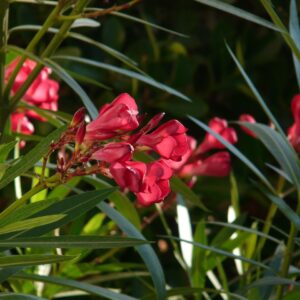The Night Queen plant is commonly known as Night Blooming Cestrum or Lady of the Night. It belongs to the Solanaceae family, which includes other well-known plants like tomatoes and potatoes. Here is some detailed information about the Night Queen plant:
- Morphology: The Night Queen plant is a semi-woody shrub that can grow up to 6 to 10 feet (1.8 to 3 meters) in height. It has elongated, lance-shaped leaves that are medium to dark green in color and arranged alternately along the stems. The plant’s branches are usually slender and may develop a somewhat vining or sprawling habit.
- Flowers: The most captivating feature of the Night Queen plant is its highly fragrant flowers, which bloom during the night. The flowers are tubular and trumpet-shaped, typically about 1 to 2 inches (2.5 to 5 centimeters) long. They usually have a white or pale yellow color that may turn slightly creamy as they age. The fragrance of the flowers is intensely sweet and often described as being similar to that of jasmine or gardenia. The blooms attract night-flying moths, which act as their primary pollinators.
- Flowering Time: As the name suggests, the Night Queen plant primarily blooms at night. The flowers usually open in the late afternoon or evening and remain open throughout the night. During daylight hours, the flowers may close or appear wilted, but they revive and release their fragrance once darkness falls.
- Cultivation: The Night Queen plant is native to tropical and subtropical regions of Central and South America. It thrives in warm climates and prefers full sun to partial shade. Well-drained soil with organic matter is ideal for its growth. Regular watering is necessary to keep the soil moist but not waterlogged. The plant can be pruned to maintain its shape and promote bushier growth.
- Landscaping and Fragrance: Due to its enchanting fragrance, the Night Queen plant is often cultivated for its ornamental value. It is commonly grown in gardens, courtyards, and containers, where its nighttime blooms can be appreciated. Placing the plant near windows, patios, or outdoor seating areas allows the fragrance to permeate the air during evenings and nights, enhancing the sensory experience.
- Caution: It’s important to note that all parts of the Night Queen plant, including the flowers, leaves, and berries, are considered toxic if ingested. Therefore, it is advisable to keep the plant away from children and pets and handle it with caution.
The Night Queen plant, with its alluring fragrance and nocturnal blooms, adds a touch of mystery and elegance to any garden or outdoor space. Its unique blooming behavior and captivating scent make it a fascinating choice for those seeking an enchanting sensory experience in their garden.














Reviews
There are no reviews yet.